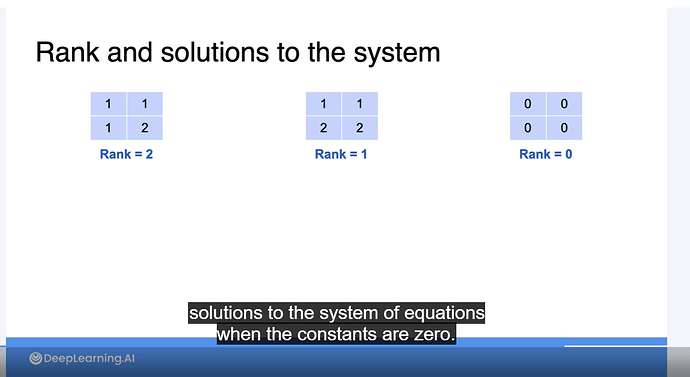The way we solve the equation is to use np.linalg.solve(coefficient of Xs, coefficient of the right side). The coefficient of the right side may not necessarily be 0. So I’m confused of the sentence in the video that “the solution space for each of these matrices is the set of solutions to the system of equations when the constants are zero.”
My interpretation is that what they mean by “solution space” in that context is the number of dimensions of the space, not the exact solutions. Of course you are right that the exact solution will depend on the RHS values of the equations also. But the point is for any set of values on the RHS, you either have no solutions, one solution or an infinite number of solutions based on the “rank” of the coefficient matrix.
Dear @flyunicorn,
The video talks about solving A⋅x=0, a special case called a homogeneous system (where the right-hand side is all zeros).
You’re using np.linalg.solve(A, b) to solve A⋅x=b, which is more general.
The video just uses the zero case to explain how the number of solutions depends on the matrix’s rank.
A word of caution.
This course has many uncorrected mistakes in the lectures.
